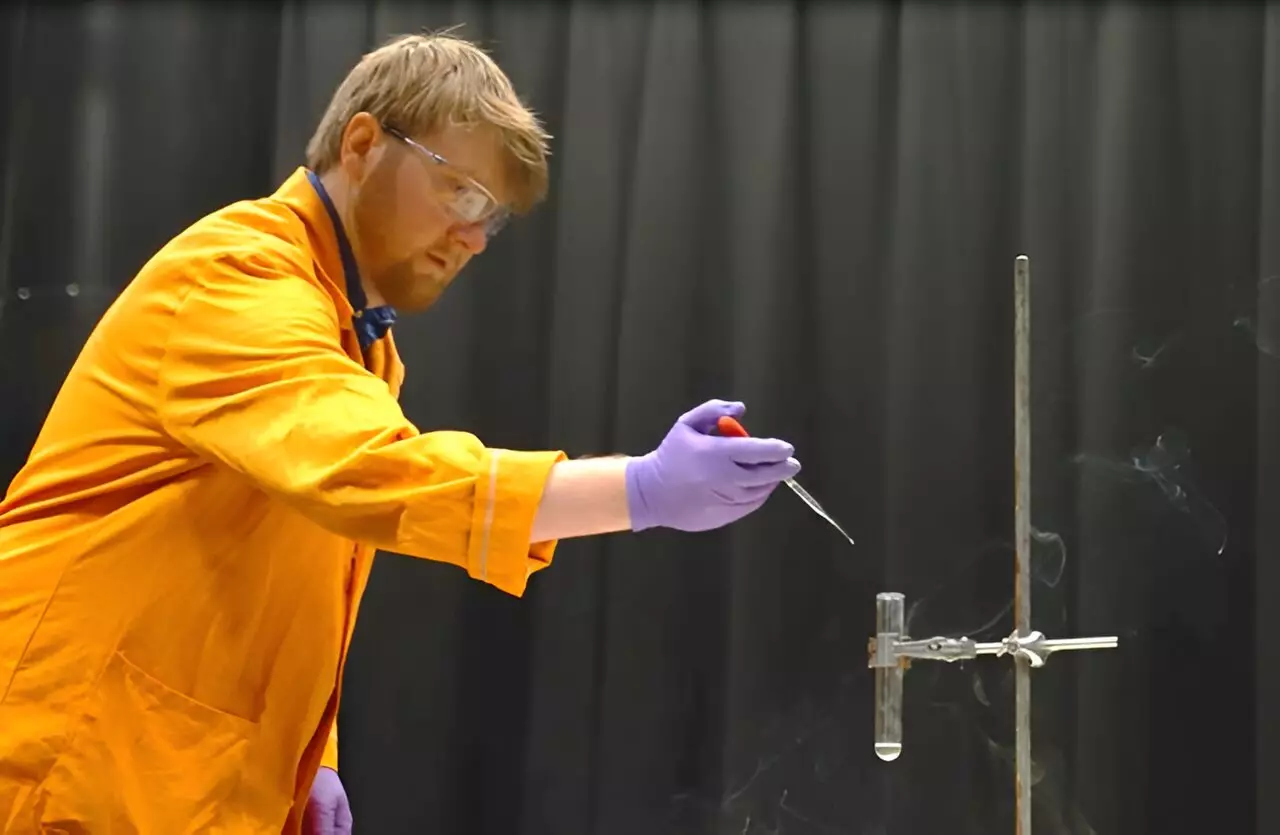The intersection of science fiction and actual scientific principles is a subject of fascination for Professor Alex Baker from the University of Warwick. On this Star Wars Day, May the 4th, Professor Baker delves into the chemistry behind the galaxy far, far away. By meticulously analyzing the elements that drive the Star Wars universe, Professor Baker sheds light on the parallels between real-world reactions and the fantastical world of Jedi knights and star ships.
The Explosive Nature of Elements
One intriguing aspect that Professor Baker highlights is the commonality of elements between the Star Wars realm and our own planet. For example, liquid oxygen, a crucial component in rocket engines within the Star Wars galaxy, mirrors its usage in propulsion systems here on Earth. Professor Baker demonstrates the power of oxygen by showcasing a ‘purple cannon fire’ reaction that illustrates the explosive nature of oxygen when combined with fuel. This presentation underscores the tangible link between scientific principles and the imaginative world of Star Wars.
Fueling the Universe
Sodium emerges as another pivotal element that bridges the gap between fiction and reality in the Star Wars universe. While sodium serves as a fuel in the galactic setting, its reaction with water leading to the production of hydrogen gas finds practical applications on Earth as well. The dual nature of sodium exemplifies the intricate connections between the science of Star Wars and the scientific phenomena we encounter in our daily lives.
Professor Baker also delves into the significance of nitrogen-containing compounds in the warfare depicted in the Star Wars saga. Baradium nitrate, a fictional substance in the galaxy far, far away, finds its parallels in the explosives and rocket fuels developed by scientists in our own world. By showcasing the violent reactions triggered by the interaction of nitric acid with nitrogen compounds, Professor Baker highlights the potential inspirations behind the galactic battles portrayed in Star Wars.
The Influence of Cryogens
While cryogens evoke thoughts of other-worldly applications, Professor Baker draws attention to their tangible use on Earth in freezing technologies. Liquid nitrogen and solid carbon dioxide, categorized as cryogens, are instrumental in freezing objects, including human eggs in IVF treatment. This practical application of cryogens underscores the potential inspiration behind iconic scenes such as the freezing of Han Solo in the Star Wars narrative.
One of the most iconic elements of the Star Wars universe, lightsabers, find their origins in the flame test experiments familiar to students in chemistry classes. Professor Baker unravels the mystery behind the vibrant colors of lightsabers by explaining how different elements emit distinct hues when heated. By elucidating the process of electrons transitioning between energy states and releasing light, Professor Baker demystifies the enchanting glow of lightsabers wielded by Jedi and Sith characters.
The exploration of the chemistry of Star Wars opens up a realm of possibilities where science fiction and scientific fact intertwine. Professor Alex Baker’s research provides a window into the imaginative yet grounded foundations of the Star Wars universe, showcasing the enduring influence of real-world chemistry on the fantastical elements depicted in popular culture. By bridging the gap between fiction and reality, this inquiry into the chemistry of Star Wars invites us to marvel at the intricate connections between the universe we inhabit and the galaxies we dream of exploring.


Leave a Reply